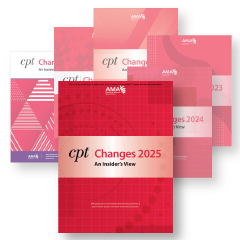by Find-A-Code™
Aug 22nd, 2022
Despite the existence of ICD-11, ICD-10-CM is still used by healthcare providers and insurance carriers around the country. It is no surprise that the CDC is constantly updating the older standard. Its latest round of updates is slated to take effect October 1, 2022. Are you ready? You had better be, as this round of updates numbers pretty close to 1,500.
For starters, the CDC has finalized 1,176 brand new diagnostic codes for the 2023 fiscal year. Another twenty-eight codes have been revised while 287 will no longer be valid as of October. The CDC reminds medical facilities that the coding process is critical for proper billing and payments. It acts as bridge between clinical coding and final billing, a bridge is only as stable as the informational foundation it is built upon.
An Intermediate Step
If you are new to the medical coding and billing environment, coding is an intermediate step. It is preceded by coding at the clinician level. During visits and treatments, services are coded as they are provided. Codes can be entered by clinicians, technicians, or assistants.
All the information generated during the visit then goes to the coding specialist. It is that person's responsibility to review documentation, compare it against coding guidelines, and then prepare invoices based on the most appropriate codes. Coding specialists look up diagnostic codes in literature and online, through sites like Find-A-Code.
Finally, the coding specialist's work is sent off to the billing department. Billing specialists review invoices, modify information as needed, and send them off to insurance carriers. Just as clinicians expect coding specialists to correct any mistakes that they make, billing specialists expect the information sent to them to be complete and accurate.
Review the Changes Now
Obviously, it's not possible for coding specialists to memorize 1,500 changes to ICD-10. No one expects them to. But October will be here before we know it, so the time to start reviewing changes is now.
If you are an independent medical coding specialist working as a subcontractor, it is up to you to take the initiative to begin reviewing the pending updates. Staying ahead is going to take some time and effort. It's going to take research. But in the end, every minute you put into reviewing the changes will pay off in more accurate invoices.
If you manage a team of coders, it is your job to remind them of pending changes and encourage them to review. You should review as well. Ultimately, you cannot expect your coders to give their best if you're not doing the same. You have the rest of the summer to work on it. Get started now and the job will not seem as daunting.
Revisit Your Sources
One last thing we would encourage you to do is revisit your sources. Whether you look up the majority of your codes on Find-A-Code or use other sources, make sure every source is utilizing the updated ICD-10 come October. The quality of your work relies on the quality of your data. Therefore, using outdated sources is only going to lead to medical billing errors.
Medical coding is the most critical step in billing and payments. Coding specialists are there to catch the errors made by clinicians and technicians. They are tasked with making sure that future errors don't occur when their work is passed on to billing.
With so many changes coming in October, there will be plenty of opportunity to make mistakes. Start getting ready now, and keep those mistakes to a minimum. Preparation is always the key, and those who are most prepared generally make the least mistakes.


 Quick, Current, Complete - www.findacode.com
Quick, Current, Complete - www.findacode.com